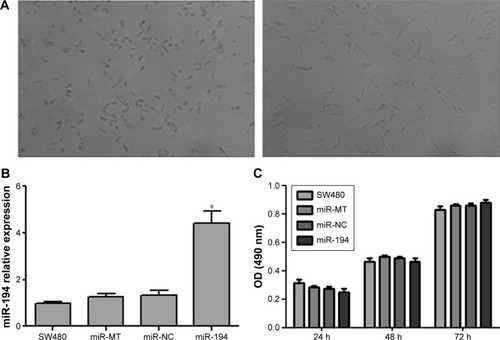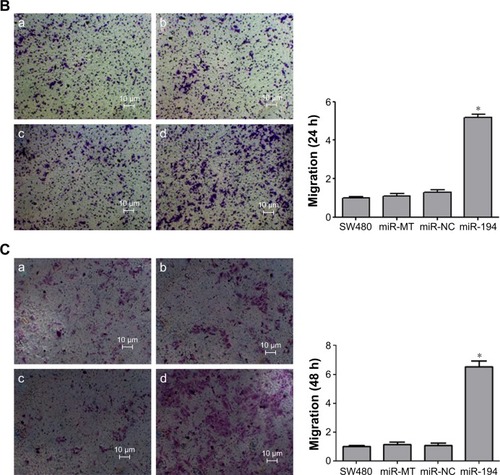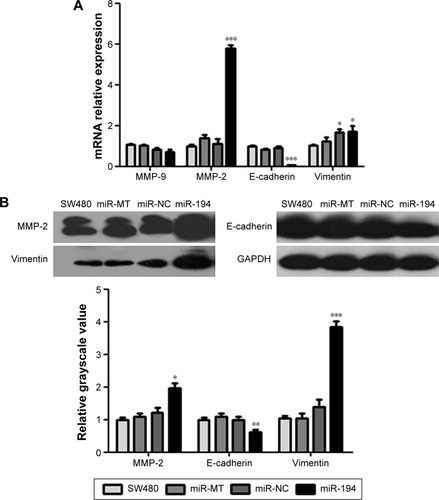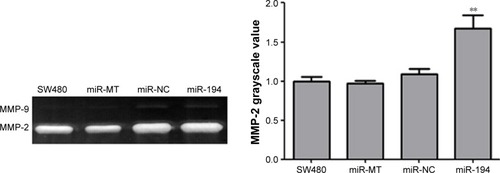Figures & data
Table 1 Sequence of primers used in this study
Figure 1 Expression status of miR-194 in CRC tissue specimens and cell lines.
Abbreviations: LNs, lymph nodes; CRC, colorectal cancer.

Table 2 Clinicopathological characteristics of 62 patients with colorectal cancer
Figure 2 MiR-194 reveals no significant effect on CRC cell proliferation.
Abbreviations: CRC, colorectal cancer; NC, negative control; MT, mock transfection; h, hours; OD, optical density.

Figure 3 Overexpression of miR-194 alters F-actin cytoskeleton distribution and cell morphology.

Figure 4 MiR-194 promotes the invasion and migration of CRC cells.
Abbreviations: CRC, colorectal cancer; NC, negative control; MT, mock transfection; h, hours.


Figure 5 The auxo-action of miR-194 on the EMT of CRC cells.
Abbreviations: CRC, colorectal cancer; EMT, epithelial–mesenchymal transition; NC, negative control; MT, mock transfection; qRT-PCR, real-time quantitative reverse transcription polymerase chain reaction.

Figure 6 MiR-194 increased the gelatin-degrading activity of MMP-2.
Abbreviations: CRC, colorectal cancer; NC, negative control; MT, mock transfection.

